Don't wanna be here? Send us removal request.
Text
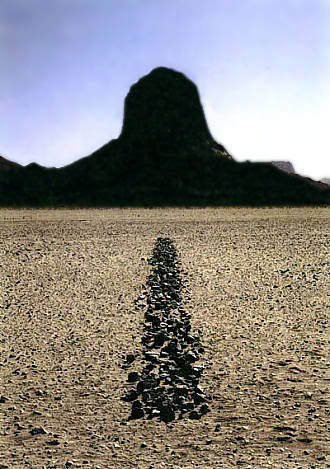
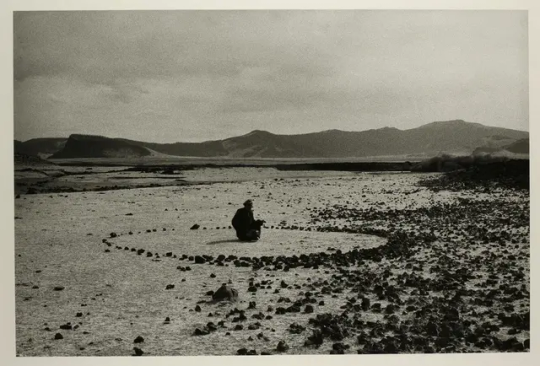

Richard Long
Richard Long is a British land artist known for walking-based works that merge sculpture, minimalism, and nature. He creates interventions in the landscape—such as lines made by walking or arranged stones—and documents them through photographs, maps, and text. Long’s practice emphasises simplicity, process, and presence, using the act of walking as both a sculptural and spiritual gesture. His work does not seek to dominate nature but to mark a quiet human trace within it. Long’s sensitivity to materials and site has influenced generations of artists thinking about sculpture beyond the studio, where nature itself becomes both material and canvas.
0 notes
Text
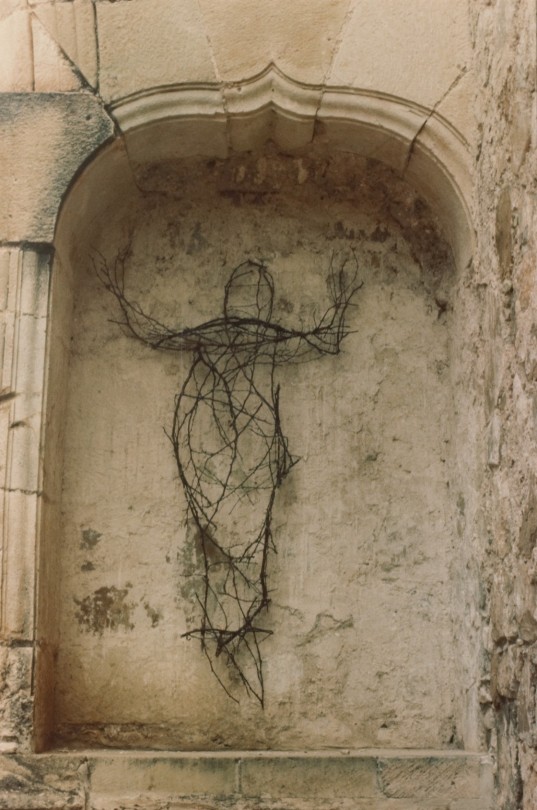
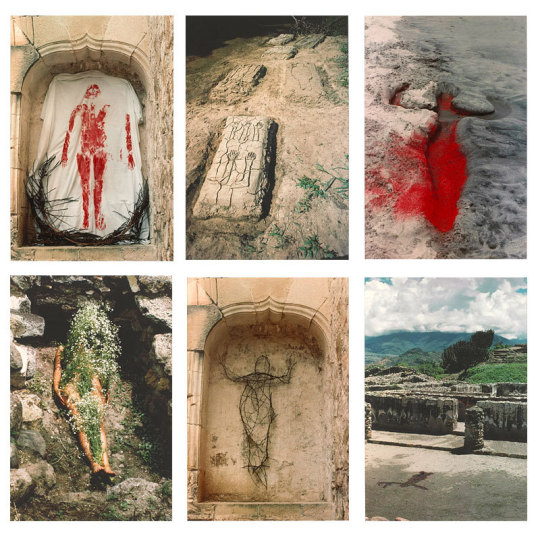

Ana Mendieta
Ana Mendieta was a Cuban-American artist whose “Earth-Body” works explored identity, displacement, and connection to nature. Through performative installations using her body, blood, fire, and natural materials like leaves or mud, she embedded herself into landscapes to evoke spiritual and ancestral belonging. Her “Silueta Series” involved tracing or imprinting her body into the earth, creating ephemeral gestures of presence and loss. Mendieta’s practice was rooted in ritual and the sacred, often referencing Santería and Indigenous worldviews. Her work suggests that memory and identity can be inscribed into the land, offering powerful ways to think about self, absence, and cultural roots.
0 notes
Text

























Shadow Garden (2025) Recycled silver and black wire, approx. [insert measurements]
This work explores line, gesture, and repetition through two small sculptures made from recycled wire. The first piece began as a flower-like form, created by looping soft silver wire repeatedly to build volume. I added a tighter cluster of silver and black wire at the centre, using smaller, more controlled movements to contrast with the larger petals. When placed on concrete in sunlight, the sculpture cast delicate, linear shadows that resembled hand-drawn marks. As someone who works primarily in drawing, this connection between sculpture and shadow felt meaningful—like a drawing made from light.
The second piece began as a plant with long leaves, but as it evolved, the form became more ambiguous—almost figural. With four curved arms, it could be read as a seed, a body, or a companion to the flower. The pairing of the two works creates a quiet tension: metal forms referencing organic life, placed in a hard urban environment.
This project helped me reflect on the relationship between material and meaning, and how spatial placement, shadow, and environment contribute to the reading of a sculpture. It also showed me how wire can function like a drawn line, suspended in space.
0 notes
Text

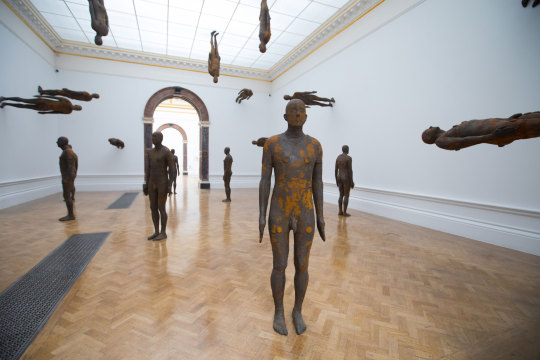


Antony Gormley
Antony Gormley is a British sculptor known for his exploration of the human form and its relationship to space. His works often use simple materials like metal and wire to create powerful, evocative sculptures that engage with themes of existence, consciousness, and the body.
Gormley frequently uses metal in his sculptures, constructing forms that range from detailed representations of the human body to abstract configurations.
Gormley’s sculptures often explore themes of isolation, vulnerability, and the human condition.
Gormley’s pieces are designed to be experienced from multiple perspectives, offering different interpretations depending on the viewer’s position.
0 notes
Text
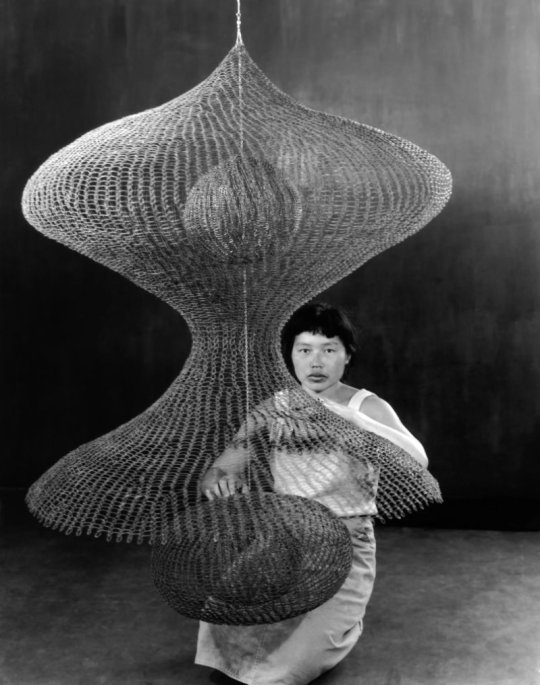

Ruth Asawa
Ruth Asawa was an American sculptor known for her intricate wire sculptures. Her work often explores themes of nature, balance, and interconnectedness. Asawa's pieces are characterised by their delicate, ethereal quality, achieved through the use of wire manipulated into complex, interlocking forms.
Asawa’s primary medium was wire. She used it to create intricate, three-dimensional forms that often resemble organic shapes.
Asawa’s work conveys a sense of fragility and strength.
Asawa’s wire sculptures exist in a space that blurs the line between drawing and sculpture.
0 notes
Text


week 1:
For my recent spatial art class project, I created a sculpture using black wire and black string. My aim was to craft a figurative piece that evokes feelings of anxiety, heaviness, and confusion. The central element of the work is a globe or head-like structure, symbolising the weight of the world and the burdens we carry.
To bring this concept to life, I manipulated the wire into circular, looping twists, forming a complex 3D model. The use of string further enhanced the wobbliness and instability of the lines, contributing to the chaotic and unsteady sphere of the globe and the legs of the piece. The legs themselves are heavy at the feet, providing a sense of stability amidst the overall disarray.
One of the most intriguing aspects of this work is the shadow it casts. The abstract, chaotic lines of the shadow add another layer of complexity and unease, reinforcing the intended emotions. The interplay between light and shadow creates an abstract ball of circling lines, which shifts the viewer’s perception based on their vantage point.
The actual lines of the sculpture, due to their abundance and intricate arrangement, bear a striking resemblance to a drawing. This effect blurs the boundaries between two-dimensional and three-dimensional art, making the piece visually compelling and thought-provoking. It’s as if the sculpture itself is a sketch brought to life, adding a dynamic, almost kinetic quality to the work.
Coming from a background in figurative painting and drawing, this piece felt like a natural extension of my previous work. The transition from two-dimensional to three-dimensional art allowed me to explore new ways of expressing familiar themes. Depending on where one stands, the sculpture can be interpreted in multiple ways. Viewed from above, it might resemble an actual figure; from the side, it could appear as the legs and lower body of an animal.
This project was an exciting and challenging endeavor, pushing me to think beyond the canvas and experiment with spatial dynamics and physical materials. The result is a piece that not only relates to my past work but also opens up new avenues for future exploration in the realm of sculpture and spatial art.
0 notes